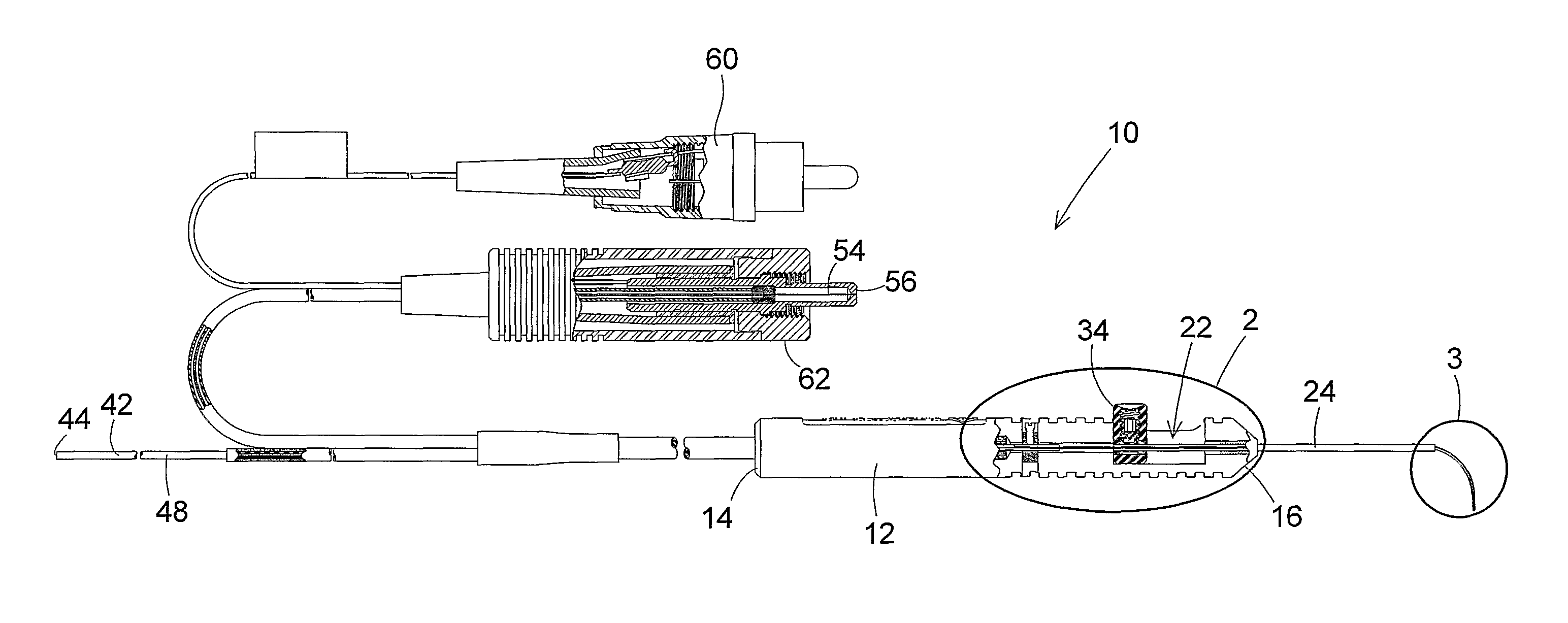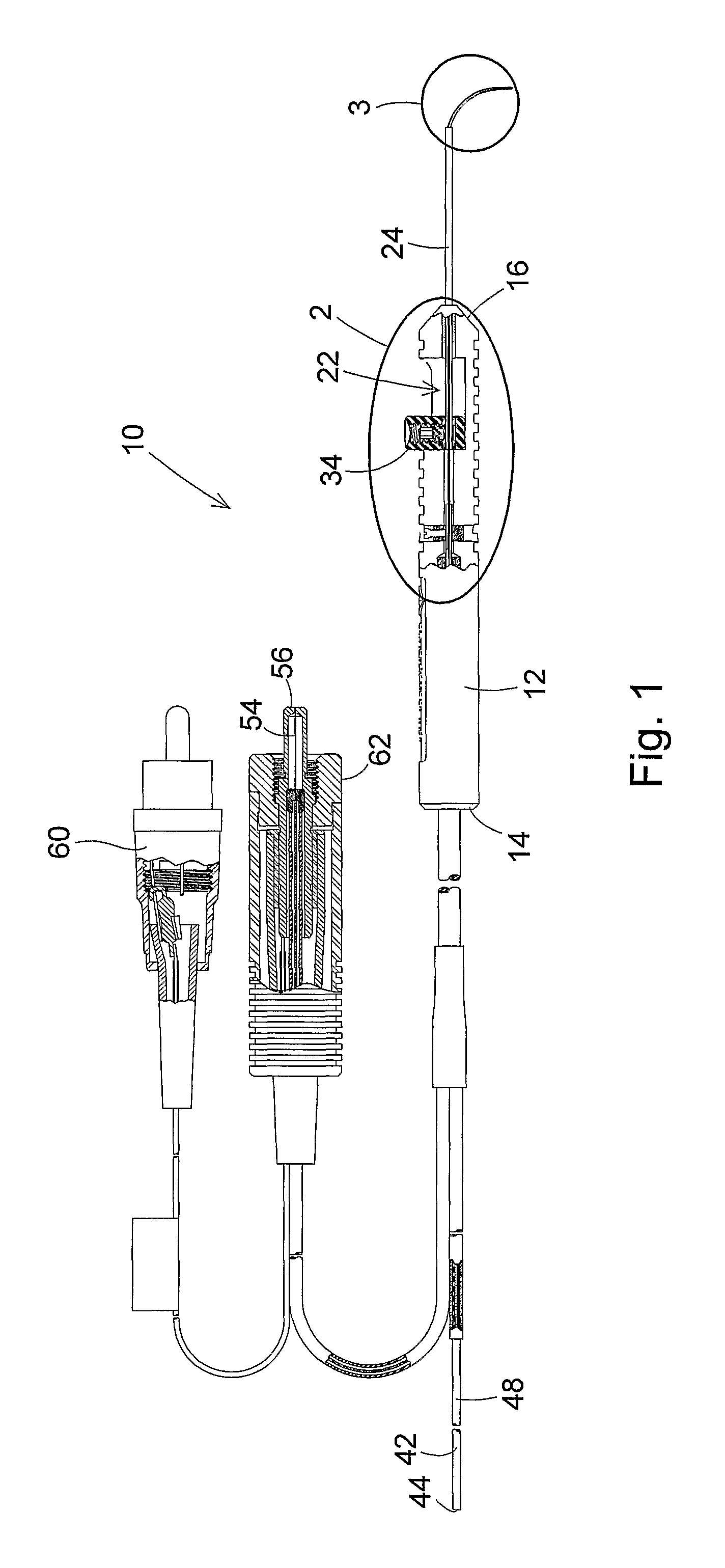Illuminated directional laser probe
a laser probe and illumination technology, applied in the field of microsurgical equipment, can solve the problems of inability to achieve optimal delivery of illumination light and laser light to the surgical site at the anterior or forward portion of the retina, and the limitations of prior art illumination instruments and laser instruments described abov
- Summary
- Abstract
- Description
- Claims
- Application Information
AI Technical Summary
Benefits of technology
Problems solved by technology
Method used
Image
Examples
first embodiment
In the operation of this first embodiment of the probe 10, movement of the finger actuator 34 in the rearward direction through the handle cavity 22 causes the tip distal end 28 to move toward the handle distal end 16. This causes the distal end portions of the illumination optic fiber 42 contained in the first tube 64 and the laser optic fiber 54 contained in the second tube 74 to be extended from the tip distal end 28. As the first tube 64 and second tube 74 extend outwardly from the tip distal end 28, the curved configurations of the tubes cause the illumination optic fiber 42 and the laser optic fiber 54 to gradually bend together toward the bent or curved configurations of the fibers shown in FIGS. 1, 3, and 4.
Movement of the finger actuator 34 in the forward direction through the handle cavity 22 causes the tip 24 to be extended from the handle distal end 16. This causes the first tube 64 containing the illumination optic fiber 42 and the second tube 74 containing the laser op...
second embodiment
A second embodiment of the illuminated directional laser probe is shown in FIGS. 8-15. the probe 90 employs many of the same component parts of the previously described embodiment of the probe 10. The common parts are identified in FIGS. 8-15 with the same reference numbers employed in identifying the earlier described probe 10, with the reference numbers being followed by a prime (′). Because the same component parts of the two probes 10, 90 have been described previously, they will not be described again in describing the construction of the second embodiment of the probe 9 shown in FIGS. 8-15.
The primary difference between the probe 90 shown in FIGS. 8-15 and the previously described probe 10 is that the first tube 64 and second tube 74 are absent from the second embodiment of the probe 90. Instead, a single tube 92 surrounds and contains portions of the illumination optic fiber 42′ and the laser optic fiber 54′ adjacent the respective distal ends 46′, 58′ of the two fibers. The ...
PUM
 Login to View More
Login to View More Abstract
Description
Claims
Application Information
 Login to View More
Login to View More - R&D
- Intellectual Property
- Life Sciences
- Materials
- Tech Scout
- Unparalleled Data Quality
- Higher Quality Content
- 60% Fewer Hallucinations
Browse by: Latest US Patents, China's latest patents, Technical Efficacy Thesaurus, Application Domain, Technology Topic, Popular Technical Reports.
© 2025 PatSnap. All rights reserved.Legal|Privacy policy|Modern Slavery Act Transparency Statement|Sitemap|About US| Contact US: help@patsnap.com



